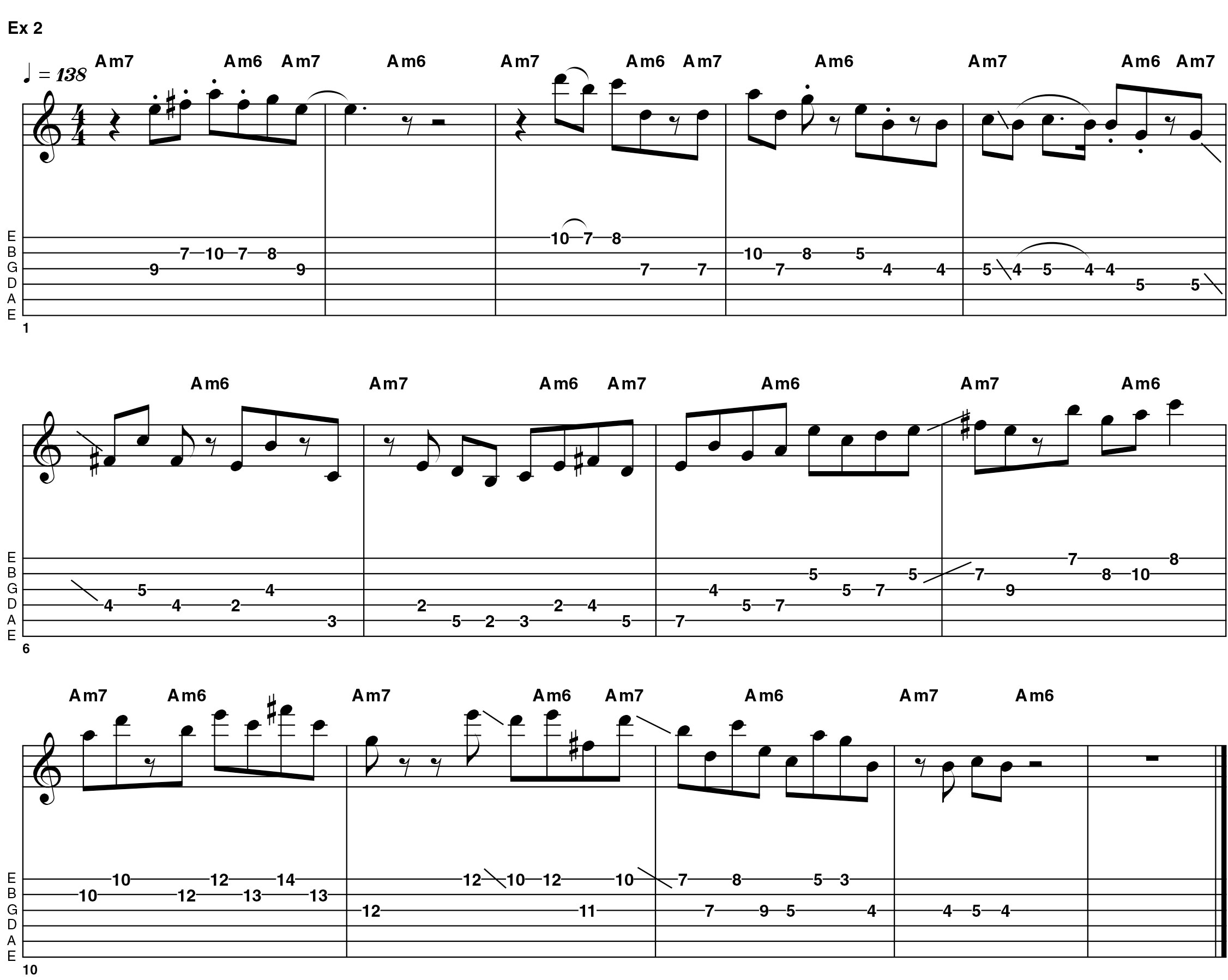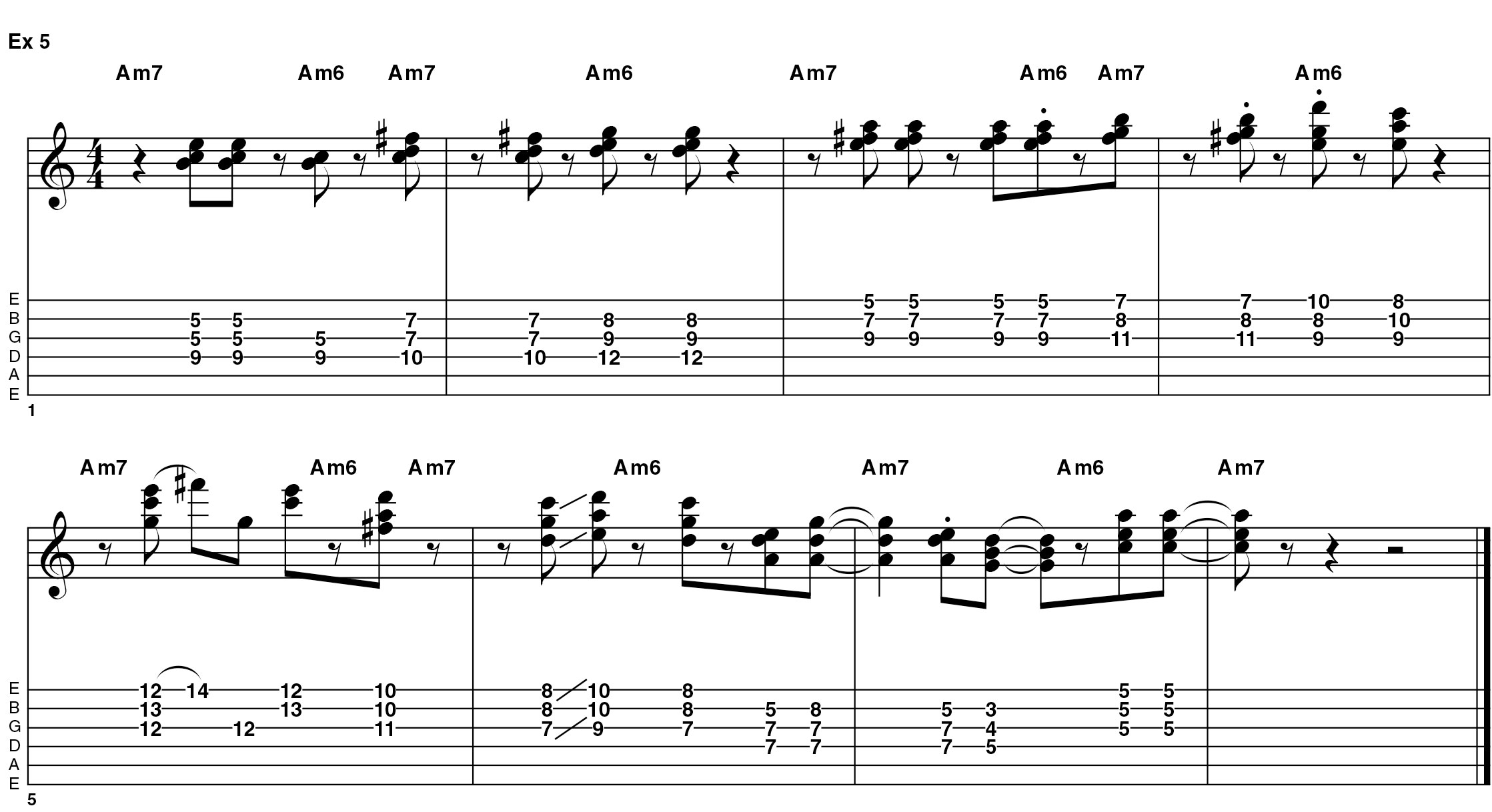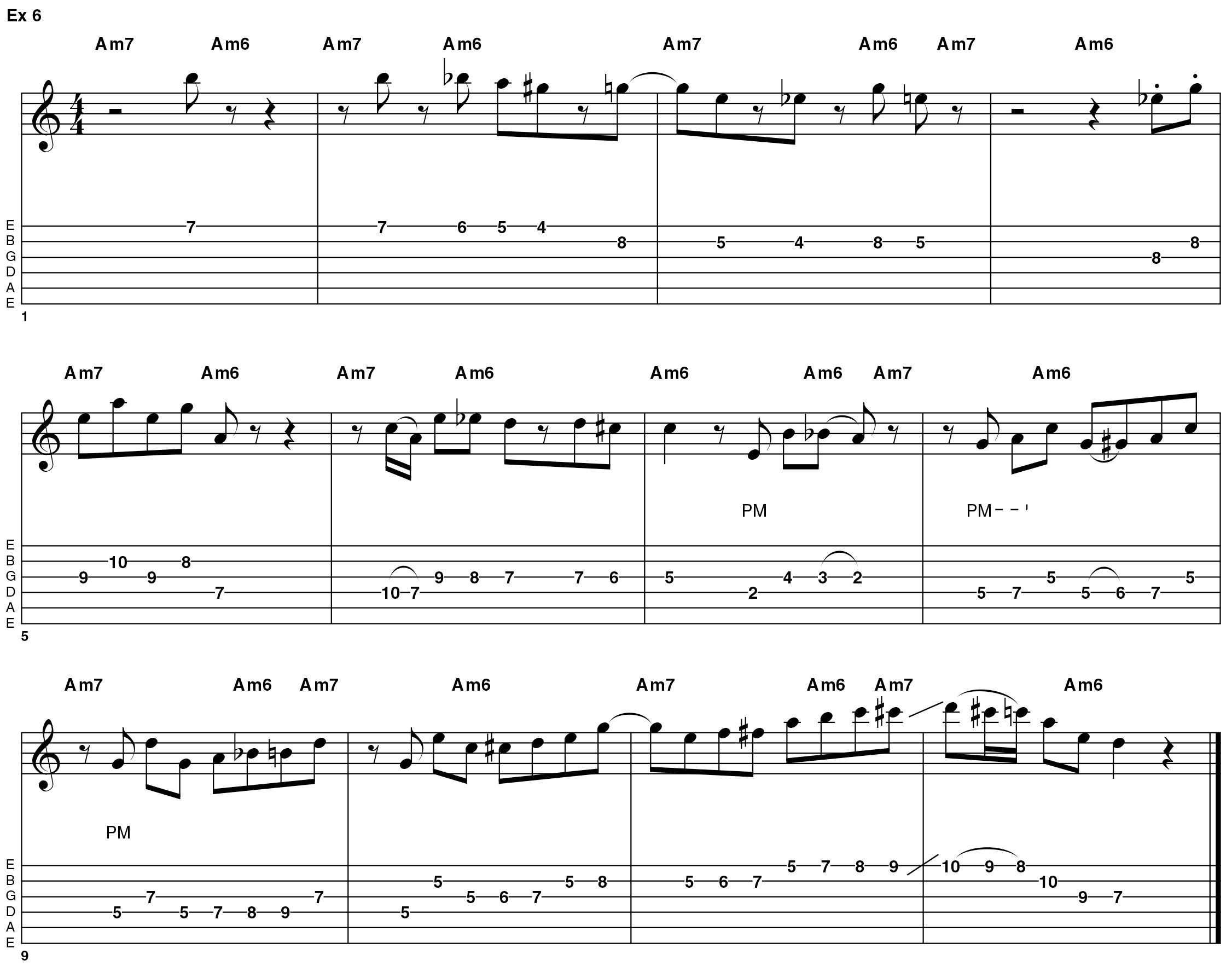Jazz-fusion is a mysterious place to visit, musically speaking. Rules are bent out of shape and it’s easy to believe that just about everything you’ve learned so far is now rendered virtually useless in this new electric guitar landscape.
As with everything, though, a little bit of guidance goes a long way - and who better to hold your hand through those early days than a player who has clocked up nearly 50 years working in all areas of jazz, from playing alongside jazz legend Stéphane Grappelli to working in the innovative Soft Machine.
There’s a wealth of info in the video that accompanies this tutorial, but we’ve singled out some exercises to light your path ahead. Good luck!
Example 1
In this first example John takes the A Dorian mode - a perfect fit for soloing over an A minor 7 vamp - and recommends that you learn it well.
Don’t limit yourself to one position, either; your knowledge of the scale must extend over the entire fretboard to the extent that you’re equally sure-footed everywhere on the neck. Only then can you take the next step towards jazz-fusion fluency!
Example 2
Here, John demonstrates how your knowledge of the A Dorian scale can actually take you a long way towards putting together a good-sounding solo over an A minor groove.
You don’t need to add anything to the scale as yet - it’s important to be confident enough to take the scale all over the fretboard without deviating from its structure first.
Want all the hottest music and gear news, reviews, deals, features and more, direct to your inbox? Sign up here.
Example 3
Something that will definitely help your co-ordination and phrasing in any scale is to form patterns, as John demonstrates here with a set of cascading triplets.
We’re still locked into the ‘Dorian scale only’ idea, but practising this type of thing breaks a lot of the ‘up and down’ monotony of working scales and avoids those lapses of concentration that end up leading you astray.
Example 4
The next thing to consider is the chords that can be formed from the A Dorian scale. In the same way that we build chords from each step of the major scale, the same thing can be done here.
It’s best to listen to what John is doing on the video to understand this idea fully, but essentially all that is happening is the notes of the Dorian are being stacked to form some interesting harmonies.
Example 5
In this example, John is taking Example 4 a step further, producing some close harmony triads rich in harmonic interest. How are these useful to the would-be jazz-fusion soloist?
You’re not going to be called upon to provide single notes all the time - if you did, things could easily end up sounding one dimensional. This is a good way to add interest and texture to a solo part.
Example 6
Now it’s time to start bridging the gaps in the Dorian scale and begin using passing notes. In other words, you’re still going from one scale tone to another, but this time you’re going to be playing the notes in between them.
As John points out in the video, this is different to ‘outside playing’. Here, you’re adding some tension and chromatic interest to your solo. Take some time to practise this: done right, it sounds amazing!
Example 7
This final example jumps forward to the video section on building speed - but it segues nicely into the exercises that precede it; the added element of speed makes it sound more exciting, but the same essential principles are at work.
John says he’s never really worked on his picking technique - just wanting to play speedily was enough. The rest of us will probably have to put in some hours with a metronome, though!
Guitarist is the longest established UK guitar magazine, offering gear reviews, artist interviews, techniques lessons and loads more, in print, on tablet and on smartphones
Digital: http://bit.ly/GuitaristiOS
If you love guitars, you'll love Guitarist. Find us in print, on Newsstand for iPad, iPhone and other digital readers







